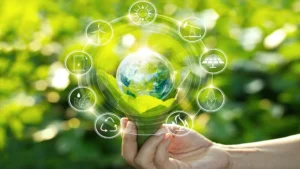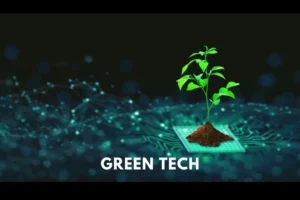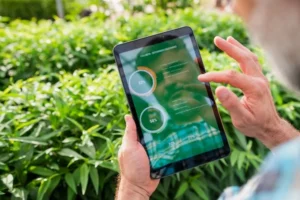As the world grapples with climate change and environmental degradation, businesses are increasingly turning to sustainable innovations to reduce their carbon footprint and promote eco-friendly practices. In 2024, green technologies are at the forefront of this transformation, offering solutions that not only protect the environment but also drive profitability and efficiency.
Contents
- 1 1. Understanding Green Technologies
- 2 2. The Rise of Green Technologies in Business
- 3 Regulatory and Market Drivers
- 4 3. Green Technologies Transforming Industries
- 5 4. Benefits of Adopting Green Technologies
- 6 Economic Benefits
- 7 5. Case Studies of Green Technology Adoption
- 8 6. Challenges in Implementing Green Technologies
- 9 7. Strategies for Successful Implementation
- 10 Collaboration and Partnerships
- 11 8. The Future of Green Technologies in Business
1. Understanding Green Technologies
Definition and Scope

Green technologies, also known as clean technologies, encompass a range of innovations designed to minimize environmental impact. These technologies include renewable energy sources, energy-efficient systems, waste management solutions, and sustainable materials.
Renewable Energy: Solar, wind, hydro, and geothermal energy sources that reduce reliance on fossil fuels.
Energy Efficiency: Technologies that enhance energy use efficiency, such as smart grids, LED lighting, and high-efficiency appliances.
Waste Management: Solutions for reducing, reusing, and recycling waste, including composting, waste-to-energy systems, and biodegradable materials.
Sustainable Materials: Development and use of materials that have a minimal environmental impact, such as bioplastics, recycled metals, and sustainable wood products.
2. The Rise of Green Technologies in Business
Corporate Commitment to Sustainability

In 2024, many businesses have committed to sustainability goals, integrating green technologies into their operations and product offerings.
Corporate Social Responsibility (CSR): Companies are adopting CSR initiatives that emphasize environmental stewardship, aiming to reduce their carbon footprint and promote sustainability.
ESG Investing: Environmental, Social, and Governance (ESG) criteria are increasingly influencing investment decisions, with investors favoring companies that demonstrate strong environmental performance.
Regulatory and Market Drivers
Government Policies: Governments worldwide are implementing regulations and incentives to promote the adoption of green technologies. These include tax credits, subsidies, and grants for renewable energy projects and sustainable practices.
Consumer Demand: Consumers are becoming more environmentally conscious, preferring products and services from companies that prioritize sustainability. This shift in consumer behavior is driving businesses to adopt green technologies to meet market expectations.
3. Green Technologies Transforming Industries
Energy Sector

Renewable Energy Adoption: The energy sector is experiencing a significant shift towards renewable energy sources. Solar and wind power are becoming increasingly cost-competitive with traditional fossil fuels, leading to widespread adoption.
Energy Storage Solutions: Advances in battery technology are enhancing the storage and distribution of renewable energy, addressing the intermittency of sources like solar and wind.
Manufacturing and Industrial Processes
Smart Manufacturing: The integration of Internet of Things (IoT) devices and automation in manufacturing processes is improving energy efficiency and reducing waste.
Sustainable Materials: Manufacturers are adopting sustainable materials and processes, such as 3D printing with recycled materials and using bio-based polymers.
Construction and Real Estate
Green Building Practices: The construction industry is embracing green building practices, such as using sustainable materials, improving energy efficiency, and incorporating renewable energy systems into buildings.
Smart Homes: Smart home technologies, including energy-efficient appliances and home automation systems, are becoming standard features in new constructions.
Transportation
Electric Vehicles (EVs): The automotive industry is rapidly transitioning to electric vehicles, driven by advancements in battery technology and increasing consumer demand for eco-friendly transportation options.
Public Transportation Innovations: Public transportation systems are incorporating green technologies, such as electric buses and trains powered by renewable energy.
4. Benefits of Adopting Green Technologies
Environmental Benefits

Reduced Carbon Footprint: Green technologies help businesses reduce their greenhouse gas emissions, contributing to the global effort to combat climate change.
Resource Conservation: Sustainable practices and technologies promote the efficient use of resources, reducing waste and conserving natural resources.
Economic Benefits
Cost Savings: Energy-efficient technologies and renewable energy sources can significantly reduce operating costs for businesses.
Competitive Advantage: Companies that adopt green technologies can differentiate themselves in the market, attracting environmentally conscious consumers and investors.
Social Benefits
Improved Public Image: Businesses that commit to sustainability enhance their reputation and build trust with stakeholders, including customers, employees, and investors.
Employee Engagement: Sustainable practices can improve employee morale and engagement, as workers are increasingly valuing corporate responsibility and environmental stewardship.
5. Case Studies of Green Technology Adoption
Tesla Motors

Tesla is a leader in the adoption of green technologies, particularly in the automotive industry. The company’s electric vehicles (EVs) have revolutionized the market, offering high-performance alternatives to traditional gasoline-powered cars. Tesla’s commitment to sustainability extends to its production facilities, which are powered by renewable energy sources.
Google has been at the forefront of integrating green technologies into its operations. The company has committed to operating entirely on renewable energy and has invested heavily in solar and wind power. Google’s data centers, known for their high energy consumption, have become models of energy efficiency through the use of advanced cooling technologies and AI-driven energy management systems.
IKEA
IKEA has embraced green technologies and sustainable practices across its global operations. The furniture giant has committed to using renewable energy in its stores and warehouses and aims to become a circular business by 2030. This includes designing products that can be reused, refurbished, and recycled.
6. Challenges in Implementing Green Technologies
Initial Investment Costs

One of the primary challenges businesses face when adopting green technologies is the high initial investment costs. While these technologies often result in long-term cost savings, the upfront expenses can be a barrier for small and medium-sized enterprises (SMEs).
Technological Barriers
Integration with Existing Systems: Integrating new green technologies with existing infrastructure can be complex and require significant modifications.
Technical Expertise: The successful implementation of green technologies often requires specialized knowledge and skills, which may necessitate additional training or hiring of experts.
Regulatory and Policy Uncertainty
Inconsistent Regulations: Variations in environmental regulations across different regions can create challenges for businesses operating globally.
Policy Changes: Uncertainty regarding future government policies and incentives can impact long-term planning and investment in green technologies.
7. Strategies for Successful Implementation
Strategic Planning and Goal Setting

Clear Sustainability Goals: Businesses should establish clear, measurable sustainability goals aligned with their overall strategy.
Long-term Planning: Adopting a long-term perspective helps businesses navigate the initial investment challenges and realize the benefits of green technologies.
Collaboration and Partnerships
Industry Collaboration: Collaborating with industry peers, suppliers, and customers can facilitate the adoption of green technologies and share best practices.
Public-Private Partnerships: Engaging in partnerships with government agencies and non-governmental organizations (NGOs) can provide access to funding, resources, and expertise.
Employee Engagement and Training
Awareness Programs: Educating employees about the benefits of green technologies and sustainable practices can foster a culture of environmental responsibility.
Skill Development: Providing training and development opportunities for employees ensures they have the necessary skills to implement and maintain green technologies.
8. The Future of Green Technologies in Business
Innovation and Technological Advancements
Next-Generation Renewable Energy: Ongoing research and development are expected to yield more efficient and cost-effective renewable energy solutions.
Advanced Materials: Innovations in materials science will lead to the development of more sustainable and environmentally friendly materials for various industries.
Increased Regulatory Support
Global Climate Initiatives: International agreements and climate initiatives will continue to drive the adoption of green technologies and sustainable practices.
Incentives and Subsidies: Governments are likely to expand incentives and subsidies for businesses that invest in green technologies, further encouraging their adoption.
Consumer and Investor Pressure
Eco-conscious Consumers: The growing demand for sustainable products and services will push businesses to integrate green technologies into their operations.
ESG Investing: The increasing focus on ESG criteria by investors will drive more companies to adopt sustainable practices and technologies.

Green technologies are transforming the business landscape, offering solutions that promote sustainability, reduce environmental impact, and drive economic growth. As businesses navigate the challenges and opportunities of integrating these technologies, strategic planning, collaboration, and a commitment to sustainability will be essential. By embracing green technologies, businesses can not only contribute to a healthier planet but also gain a competitive edge in the evolving marketplace.
The year 2024 represents a pivotal moment for green technologies in business, as companies across industries recognize the value of sustainable innovations. As technological advancements continue and regulatory support grows, the adoption of green technologies will become increasingly integral to business success and environmental stewardship.

Pingback: Mergers and Acquisitions: Navigating the Complexities of Corporate Growth - Business Rising